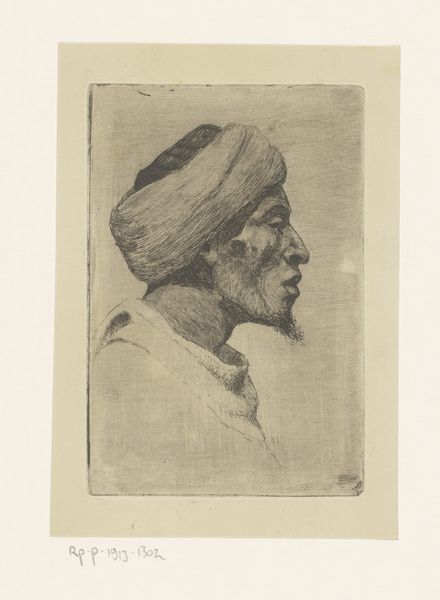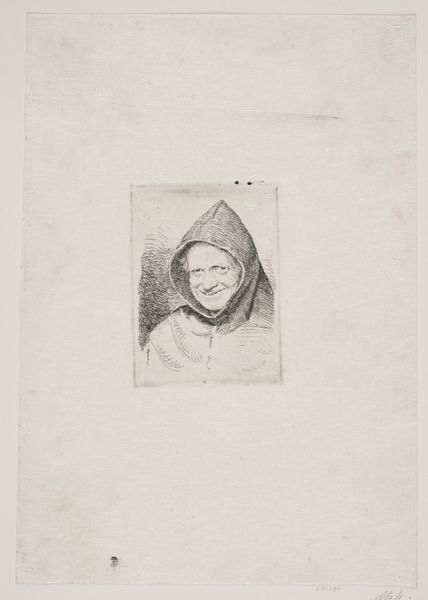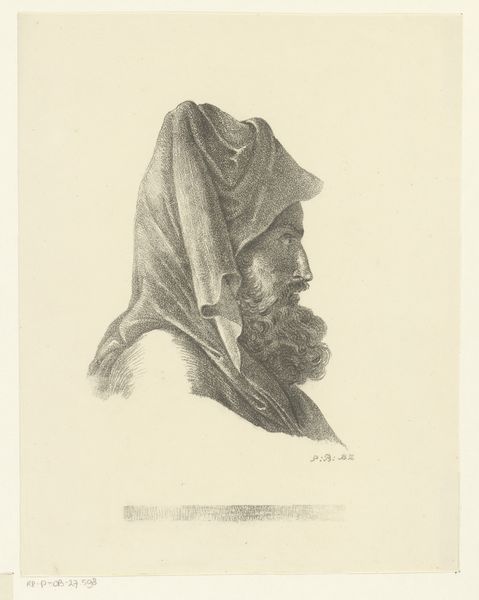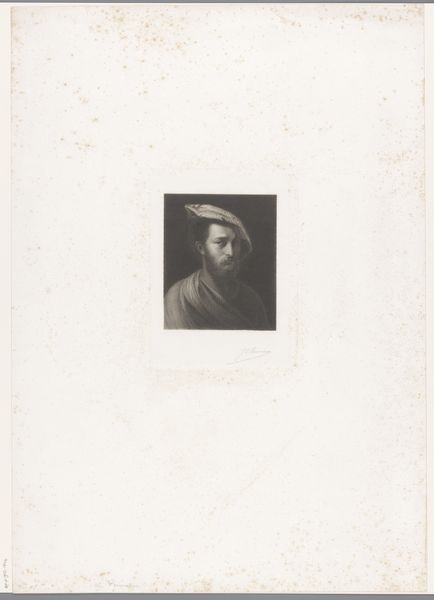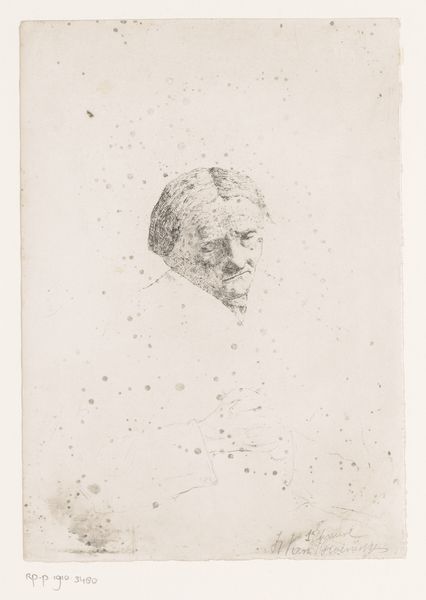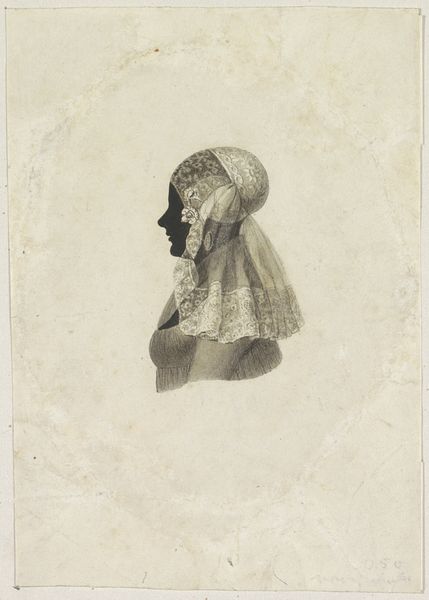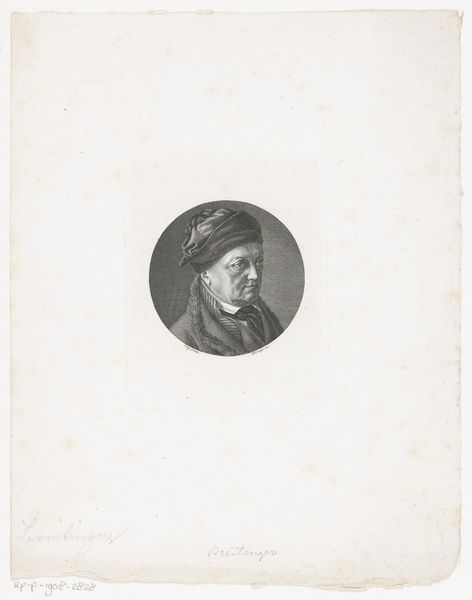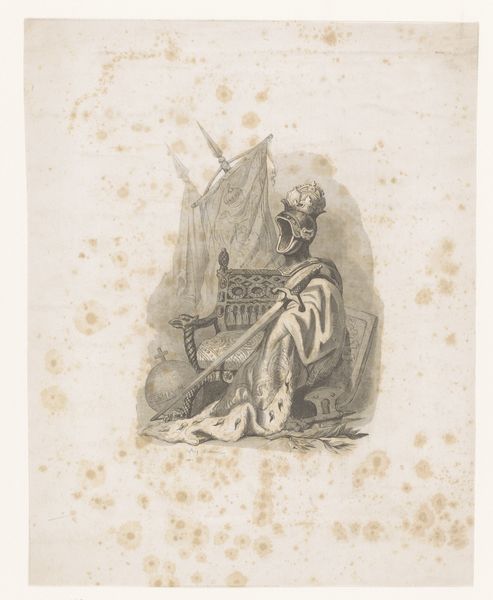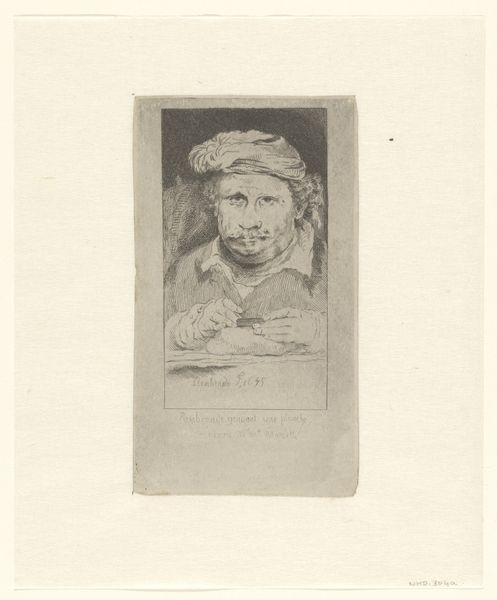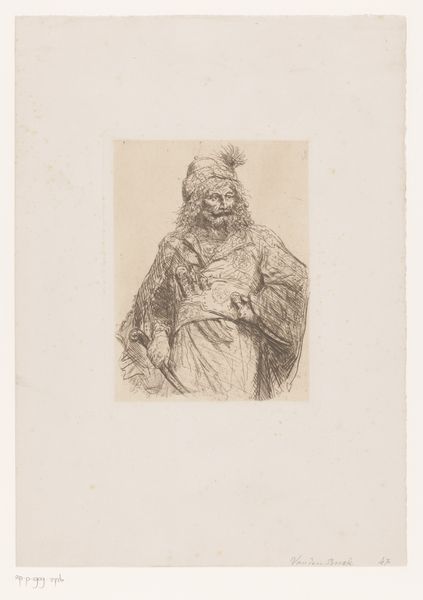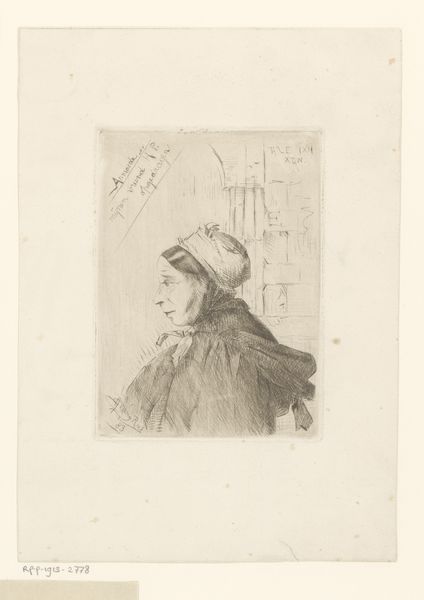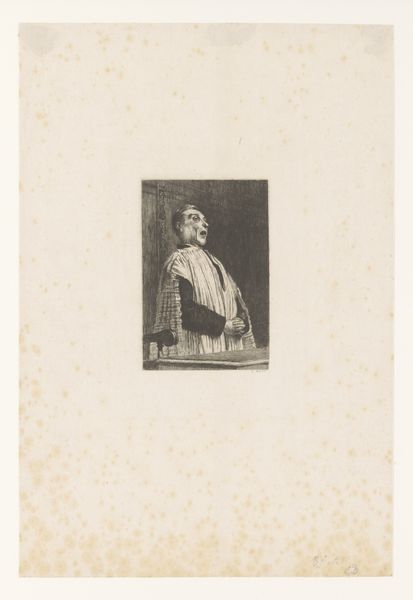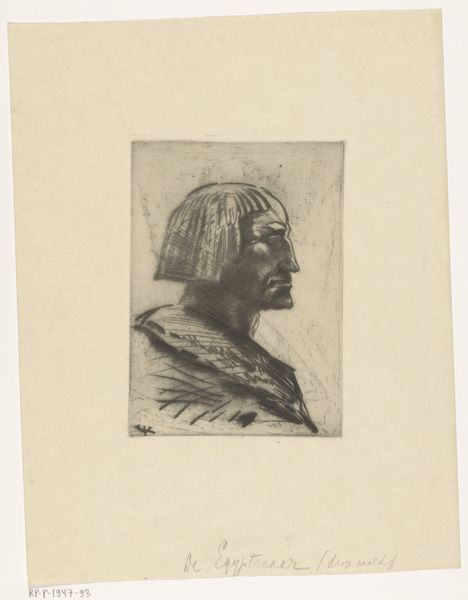
print, etching
#
portrait
# print
#
etching
#
history-painting
Dimensions: height 109 mm, width 81 mm
Copyright: Rijks Museum: Open Domain
Curator: Welcome. We're standing before "Portret van een man met tulband," or "Portrait of a Man with Turban," an etching made sometime between 1867 and 1890 by Philip Zilcken. Editor: My first impression is one of quiet dignity. The printmaking gives the whole piece a soft, almost dreamy quality. He seems contemplative. Curator: Zilcken was a fascinating figure himself – a champion of modern art, and a keen observer of social dynamics. This work, rendered as an etching, sits at the intersection of orientalism, the Dutch colonial project, and the rise of ethnographic studies. How might we unpack this in relation to contemporary understandings of representation and power? Editor: The turban is such a strong symbol – immediately suggesting a particular cultural or religious identity, but one that's viewed through a European lens. The history of the turban itself, and how it becomes codified into certain meanings through its depiction in art, becomes really significant. The subject’s gaze is averted, adding to the mystery. It is very compelling, almost confrontational. Curator: Exactly. It encourages us to think about how we perceive "the other," and to confront the loaded history behind those perceptions. This image, by a white European artist, contributes to a complex, sometimes troubling, narrative. We must ask: what meaning did it have then, and what does it evoke now? Editor: The way Zilcken renders the texture of the turban versus the man’s face suggests an attempt to understand an ‘other’. There's a symbolic differentiation at play, and yet the medium itself lends a unity. What would the original intended audience see in this? It’s so tied up in the visual language and cultural history. Curator: Ultimately, viewing "Portrait of a Man with Turban," through our contemporary lens, encourages a critical reflection on the artist’s role in perpetuating colonial views, and more broadly the power dynamics inherent in the act of portraying an individual whose identity might be fundamentally misunderstood. Editor: It's a work that sparks essential, challenging conversations about historical context and the lasting weight of representation.
Comments
No comments
Be the first to comment and join the conversation on the ultimate creative platform.
